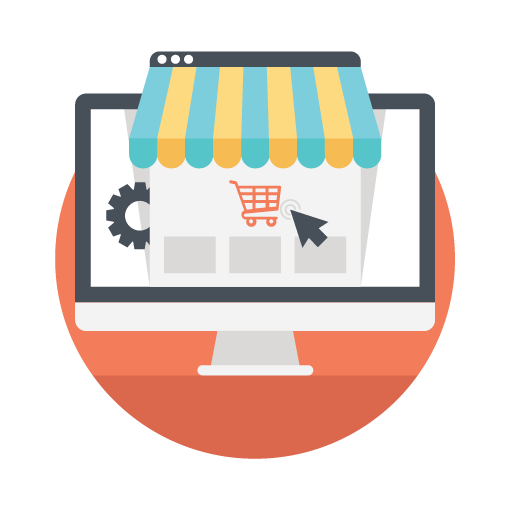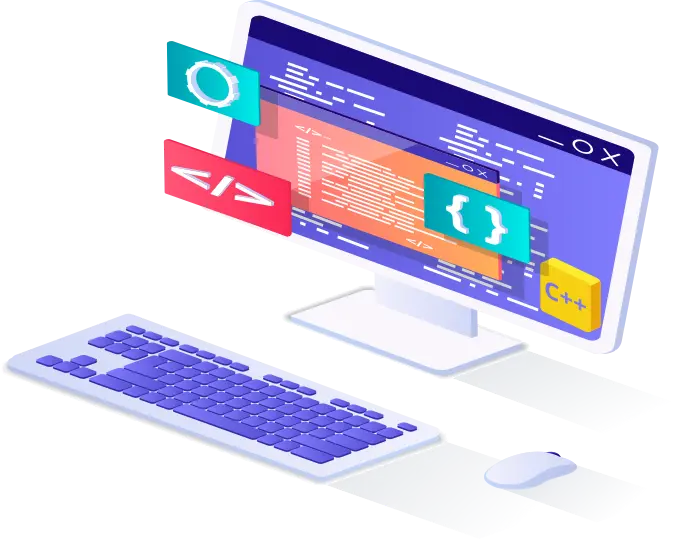How Technology Can Really Improve Your Retail Sales
Technology has changed the way retail businesses operate by helping to create efficiencies, save money, and provide better products and services. Learn how retail businesses are leveraging technology to their advantage.
Predictive Analytics With Big Data
Retailers have been collecting a lot of customer data for a while now, but analyzing it and using the data to solve problems or create new solutions has been a challenge for some.
Though Predictive Analytics has existed for decades, it has now developed into a concept whose time has come. With more data available, retailers have begun using Predictive Analytics to increase profits and improve their competitive advantage.
Predictive analytics defines outcomes through models to answer the question “What will most likely happen?” By doing so, businesses can move beyond reactive strategies toward positive outcomes, meeting business goals and reduce risks. Now retailers can be proactive about the future by analyzing customer behavior and trends from the past.
The use of advanced analytics and predictive modeling is changing the face of retail, and helping us all get what we want, when we want it.
Predictive models can analyze both current and historical data to understand customers and their buying patterns.
Predictive analytics helps retailers be smarter, more efficient, and reduce costs.
When retailers successfully analyze data, they are able to understand important information about customers buying behavior, personalize the shopping experience, address a customer’s specific needs based on where they are in the customer journey, improve efficiencies, reduce supply chain costs and more.
Collecting customer data has become a major priority for businesses. As more advanced technology is developed to capture and analyze customer data, the more companies are able to contextualize, draw insights from, and monetize it.
Retail Businesses Use Predictive Analytics to:
- Control quality.
- Evaluate marketing campaigns.
- Handle and mitigate risks.
- Highlight areas for new revenue.
- Identify primary markets.
- Keep valued customers.
- Offer customized products and services.
See: How to Use Big Data for eCommerce
Micro Moments
Micro Moments are intent-driven moments of decision-making.
Micro moments occur when people reflexively turn to a device—increasingly a smartphone, to act on a need to learn something, do something, discover something, watch something, or buy something. They are intent-rich moments when decisions are made and preferences shaped. In these moments, consumers' expectations are higher than ever.
Of smartphone users, 91% look up information on their smartphones while in the middle of a task.
How do you use Google or your favorite search engine? We often rely on finding what we need in the moment, whether that’s for learning more about particular products or solving a problem, like where to find a certain type of food or home furnishing. Retailers who can meet customers “in the moment” have a powerful advantage. Thanks to a wealth of data and powerful analytics capabilities, businesses can capture moments and anticipate what a customer might need even before they know it.
One of the key ways to help customers in their time of need is to be accessible, especially to mobile devices. So check your website’s usability on a variety of mobile devices.
Recommendation Engines
Recommendation engines are a powerful tool for retailers to help customers more easily find products. Some of which they may not have otherwise considered.
Amazon and Netflix have recommendation engines you might be most familiar with. Now many other retailers are using similar functionality with great results.
Recommendation engines can return personalized and relevant results to customers, based on search behavior and product preferences, they serve up contextually relevant offers and product options that appeal to individual shoppers — and help drive sales.
Recommendation engines or Recommender systems are algorithms, programs, and services whose task is to use data to predict which products would be of interest to a customer. There are two main types of recommender systems: content-based and collaborative filtering. Content-based recommender systems use data collected from specific products. They recommend products to a customer that are similar to ones the customer has previously bought or shown interest in.
Collaborative filtering recommender systems identify products that a customer might like based on the reaction history of other similar customers of these systems. They usually consider the user’s previous reactions, too
Retailers benefit from higher cart sales and improved customer satisfaction thanks to the ease of use.
When retailers present customers with personalized picks, it makes them want to spend more. Company profits rise and customers feel like this is a business that understands them.
Recommendation engines get better over time. The more accurate data the algorithms have to assess a customer’s shopping behavior, the better the recommendations.
Order Fulfillment Automation
Automated order fulfillment is the implementation of technology to automatically manage the fulfillment process, which helps to speed up processes, save time, and reduce human error.
As a retailer, automating the order fulfillment process helps you optimize your supply chain, increase customer satisfaction, drive sales, and cut back on labor and fulfillment costs.
Manual data entry is a slow and labor-intensive process that is inherently subject to human errors.
Every step of the order fulfillment process from inventory receiving, processing orders and shipping that you can automate helps to make your retail operation more efficient and less likely to have problems related to getting your products delivered to your customers.
Growing retail business owners reach a point where they can no longer manage the increased number of orders effectively and need to take a more strategic role instead of dealing with day-to-day tasks. If you or your employee’s attention and efforts are consumed with retail order fulfillment, then you won’t have enough time and resources to take care of important tasks like product development, customer relationships, and marketing.
In order to stay competitive, finding a way to implement automation into your logistics operations will help you avoid losing customers and scale faster and more efficiently, while saving you time and money.
See: Ecommerce Shipping and Order Tracking Components
Inventory Management
A retail company’s inventory is one of its most valuable assets. Its inputs and finished products are the core of its business. A shortage of inventory when and where it’s needed can be extremely detrimental.
At the same time, inventory can be thought of as a liability. An excess inventory carries the risk of spoilage, theft, damage, or shifts in demand. Inventory must be insured, and if it is not sold in time it may have to be disposed of at clearance prices—or simply destroyed.
For these reasons, inventory management is important for retail businesses of any size. Knowing when to restock inventory, how much to purchase or produce, what price to pay—as well as when to sell and at what price—can easily become complex decisions.
Smart retail companies typically have sophisticated inventory management systems capable of tracking real-time inventory levels.
Accurate data helps retailers manage stock flow, make solid predictions, better decisions, and forecasting that help improve the store’s bottom line. Better inventory management of raw, in-process, and finished goods reduces waste, spoilage, and even theft.
Customer Chat Bots
There’s a deep communication disconnect between brands and customers, centered around customer service and it’s growing. It’s the gap between preferred communication channels used by brands and the channels customers use every day. It all can be distilled down to this: It’s the difference between phone-based customer support and messaging-based customer support.
Chatbots, AI, and automation are cost-effective, easy to implement, and a quick way to transform your customer service.
Your customer service experience depends on your attitude toward your customers' wants, needs, and goals, and success is determined by how you design this experience from the bottom up: people, processes, and your response to what your customers are telling you.
Companies like Apple and Amazon are demonstrating with their customer service techniques that live support as the first line of defense isn’t working out. There’s a good reason those two retail giants have abandoned it in favor of automated customer service up front, saving their contact center phone numbers as the last step.
Artificial intelligence bots are able to improve the customer journey pre- and post-sales by lowering cart abandonment and helping customers solve problems after the sale without human intervention.
A study, which was performed for Twilio by surveying 6,000 customers, shows that nine out of ten customers would like to be able to use messaging to talk to businesses.
There has been rapid adoption of messaging-based customer service bots across retail. At least 50% of the Fortune 5000 have experimented with and tested out bots. Messaging has become the preferred customer service channel, and call center volume will be reduced.
Internet of Things (IoT) and Smart Equipment
The Internet of Things and smart equipment have begun to transform the shopping experience. Thanks to the volumes of data produced and the ability to process it, customers can receive a personalized shopping experience that wasn’t possible before. Internet of Things technology helps retailers deliver an enhanced shopping experience to their customers.
Smart equipment helps retailers, from warehousing and equipment maintenance to supply chain management and, of course, shopping itself.
Smart equipment can help retailers improve store operations, enhance customer experience and drive more conversions. IoT devices and sensors can also help retailers solve day-to-day problems such as detecting crowded areas, reducing check out times, managing product inventory, tracking energy utilization, preventing theft and monitoring goods.
One example of smart equipment is sensor-embedded shelves that track inventory. Another is point-of-sale systems that let customers buy items on the spot instead of standing in a checkout line.
8 Example Applications of IoT Smart Equipment in Retail:
- Personalized retail marketing and content delivery
- Optimal staffing level indicators
- Cashierless payment systems
- Movement tracking systems for optimal store setup
- Wireless shipment tracking devices
- Real-time condition monitoring of goods
- Inventory management tools
- In-store buyer behavior tracking
By improving the customer experience through digital connectivity and data collection, smart stores help retailers retain business and increase revenue.
Related : How to use Artificial Intelligence (AI) for eCommerce
Extended Reality (XR)
Extended reality includes virtual reality (VR), augmented reality (AR), and mixed reality (MR).
Virtual and augmented reality offer retailers several ways to enhance the customer experience. Extended reality can provide additional product information for customers when they are browsing for products such as enabling them to virtually “try them on”.
Extended reality is already in use by many retailers today. For example, Houzz, a leading online platform for home remodeling and design, recently introduced a new AR feature that enables shoppers to virtually cover their floors with tile, true to scale, and preview how it would look in their homes.
What customers become accustomed to in their living rooms is what they will learn to expect on eCommerce websites and in the showroom: an immersive AI-enhanced XR experience that enable them to explore, understand, and make better decisions.
Conclusion
Today’s customers want experiences that include personalization and information to help them make better decisions. By leveraging technology, retailers can greatly enhance their customers' shopping experience, operate more efficiently and save money, and as a result improve their bottom line.
Contact us today to learn how we can help you implement technology to improve your retail sales.
Related Services: Ecommerce Website Development



